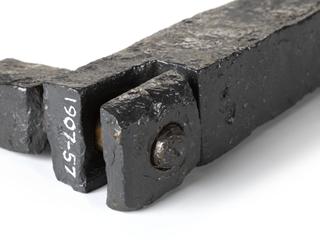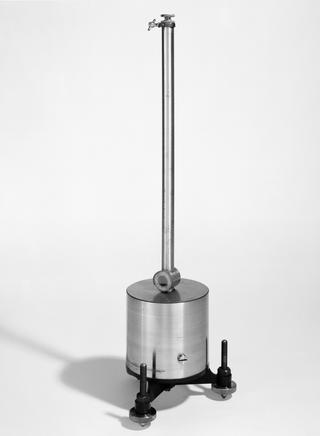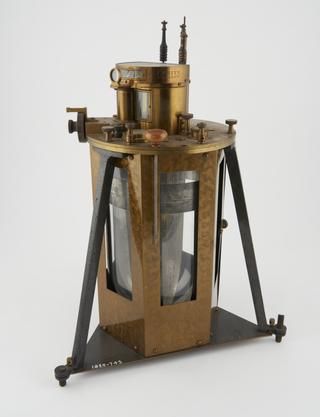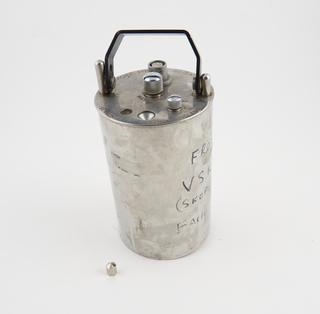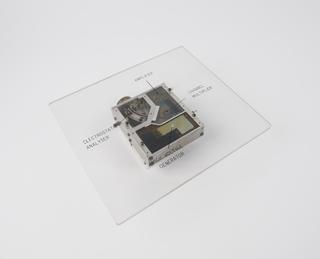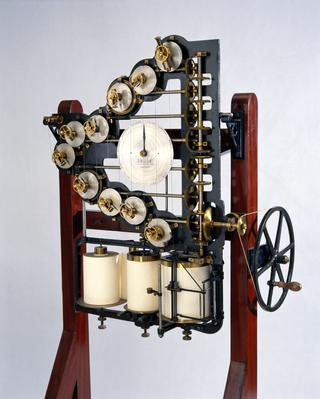

This type 3 Martin-Clark resistivity meter was designed and built in 1977 by Location Instruments in Oxford.
The device is encased in a weather sealed ABS box which is 16 cm long, 8 cm wide and 5.5 cm deep. The front of the box has a set of two switches which control the range and current of the meter, and a set of four dials which turn the device on or off, activates different leads and controls the sensitivity and ohm readout.
The top of the device has a plug-in lead which divides into approx. five leads which, when in use, would be connected to separate steel probes which mark the boundaries of the area being measured for resistivity. The model also comes with an attached clip board which was used to record the measurements made across a survey site.
This is a type 3 Martin-Clark resistivity meter, which was designed and built in 1977, by Location Instruments based in Oxford.
Resistivity meters are used to measure the electrical resistance between two or more points. A common use for them is to measure resistivity in the earth, which can be used to detect the potential locations of buried man-made structures as part of archaeological surveys, or deposits of mineral and metals in geological prospecting.
The Martin-Clark design of resistivity meter is among the very earliest their kind. They are categorized as null balance type meters, which can be operated using a dial/slider to control the voltage of the meter, allowing for highly accurate measurements of electrical resistivity, but at the cost of being relatively short ranged.
The type 3 meter was introduced with all-around improvements compared to previous models, primarily by having a more integrated circuit design which removed the need for heavy and expensive transformers, which also potentially created unreliable results during measurements. This model also came with plug in leads which allowed an operator to make quicker successive resistivity measurements.
Details
- Category:
- Geophysics
- Object Number:
- 1977-646
- Materials:
- plastic (unidentified) and electronical component
- Measurements:
-
overall: 16 cm x 8 cm x 5.5 cm,
- type:
- meter
- credit:
- Clark, A.J.
